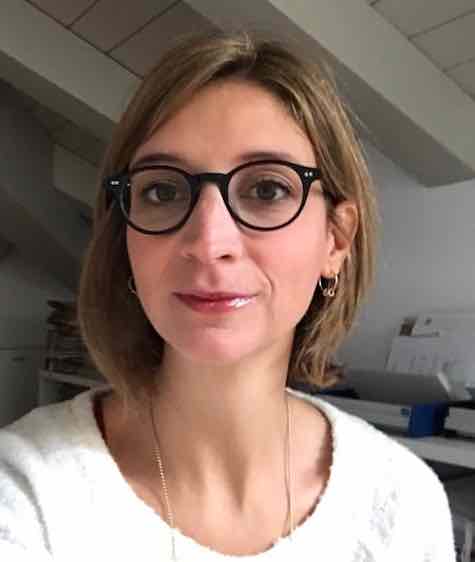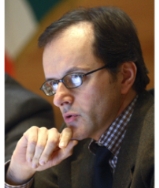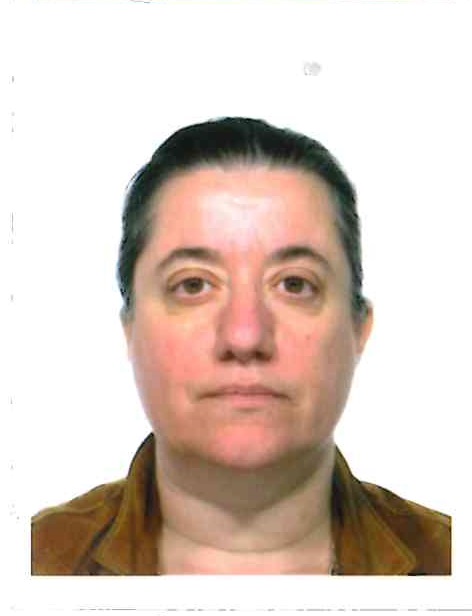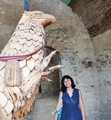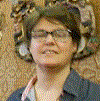Studiare
In questa sezione è possibile reperire le informazioni riguardanti l'organizzazione pratica del corso, lo svolgimento delle attività didattiche, le opportunità formative e i contatti utili durante tutto il percorso di studi, fino al conseguimento del titolo finale.
Calendario accademico
Il calendario accademico riporta le scadenze, gli adempimenti e i periodi rilevanti per la componente studentesca, personale docente e personale dell'Università. Sono inoltre indicate le festività e le chiusure ufficiali dell'Ateneo.
L’anno accademico inizia il 1° ottobre e termina il 30 settembre dell'anno successivo.
Calendario didattico
Il calendario didattico indica i periodi di svolgimento delle attività formative, di sessioni d'esami, di laurea e di chiusura per le festività.
| Periodo | Dal | Al |
|---|---|---|
| I semestre | 2-ott-2017 | 20-gen-2018 |
| ANNUALE | 2-ott-2017 | 9-giu-2018 |
| II semestre | 26-feb-2018 | 9-giu-2018 |
| Sessione | Dal | Al |
|---|---|---|
| ESAMI LINGUE - sessione invernale | 22-gen-2018 | 24-feb-2018 |
| ESAMI LINGUE - sessione estiva | 11-giu-2018 | 28-lug-2018 |
| ESAMI LINGUE - sessione autunnale | 27-ago-2018 | 22-set-2018 |
| Sessione | Dal | Al |
|---|---|---|
| LAUREE LINGUE - sessione autunnale a.a. 2016/2017 | 18-dic-2017 | 21-dic-2017 |
| LAUREE LINGUE - sessione invernale a.a. 2016/2017 | 23-mar-2018 | 29-mar-2018 |
| LAUREE LINGUE - sessione estiva | 16-lug-2018 | 21-lug-2018 |
| LAUREE LINGUE - sessione autunnale | 12-nov-2018 | 17-nov-2018 |
| LAUREE LINGUE - sessione invernale | 12-apr-2019 | 18-apr-2019 |
| Periodo | Dal | Al |
|---|---|---|
| Festa dell'Immacolata | 8-dic-2017 | 8-dic-2017 |
| Vacanze di Natale | 22-dic-2017 | 7-gen-2018 |
| Vacanze di Pasqua | 30-mar-2018 | 3-apr-2018 |
| Festa della liberazione | 25-apr-2018 | 25-apr-2018 |
| Festa del lavoro | 1-mag-2018 | 1-mag-2018 |
| Festa del Santo Patrono | 21-mag-2018 | 21-mag-2018 |
| Festa della Repubblica | 2-giu-2018 | 2-giu-2018 |
| Vacanze Estive | 13-ago-2018 | 18-ago-2018 |
| Descrizione | Periodo | Dal | Al |
|---|---|---|---|
| ANNUALE | ANNUALE | 2-ott-2017 | 9-giu-2018 |
Calendario esami
Gli appelli d'esame sono gestiti dalla Unità Operativa Segreteria Corsi di Studio Lingue e letterature straniere.
Per consultazione e iscrizione agli appelli d'esame visita il sistema ESSE3.
Per problemi inerenti allo smarrimento della password di accesso ai servizi on-line si prega di rivolgersi al supporto informatico della Scuola o al servizio recupero credenziali
Per dubbi o domande leggi le risposte alle domande più frequenti F.A.Q. Iscrizione Esami
Docenti
 valentina.adami@univr.it
valentina.adami@univr.it
 paola.bellomi@univr.it
paola.bellomi@univr.it
 daniele.beltrame@univr.it
daniele.beltrame@univr.it
 paolamaria.caleffi@univr.it
paolamaria.caleffi@univr.it
 riccardo.cella@univr.it
riccardo.cella@univr.it
 elisa.dallarosa@univr.it
elisa.dallarosa@univr.it
 sara.dattoma@univr.it
sara.dattoma@univr.it
 mariangela.lando@univr.it - marilando771@gmail.com
mariangela.lando@univr.it - marilando771@gmail.com
 stefania.montemezzo@univr.it
stefania.montemezzo@univr.it
 chunye.niu@univr.it
chunye.niu@univr.it
 alessia.polatti@univr.it
alessia.polatti@univr.it
 dora.renna@univr.it
dora.renna@univr.it
 fabioantonio.scrignoli@univr.it
fabioantonio.scrignoli@univr.it
 tania.triberio@univr.it
tania.triberio@univr.it
 sonia.trovato@univr.it
sonia.trovato@univr.it
Piano Didattico
Il piano didattico è l'elenco degli insegnamenti e delle altre attività formative che devono essere sostenute nel corso della propria carriera universitaria.
Selezionare il piano didattico in base all'anno accademico di iscrizione.
1° Anno
| Insegnamenti | Crediti | TAF | SSD |
|---|
Prima lingua stranieraSeconda lingua stranieraPrima letteratura e cultura stranieraLetteratura e cultura tedesca 1
Seconda letteratura e cultura stranieraLetteratura e cultura tedesca 1
2° Anno Attivato nell'A.A. 2018/2019
| Insegnamenti | Crediti | TAF | SSD |
|---|
Prima lingua stranieraSeconda lingua stranieraPrima letteratura e cultura straniera o materia d'areaDeutsche Literatur und Kultur 2
English literature and culture 2
Literatura y cultura española 2
Seconda letteratura e cultura straniera o materia d'areaDeutsche Literatur und Kultur 2
English literature and culture 2
Literatura y cultura española 2
Geografia delle comunicazioni e del commercio internazionale
Letteratura e cultura italiana
Storia economica contemporanea
Teoria e tecnica della comunicazione
3° Anno Attivato nell'A.A. 2019/2020
| Insegnamenti | Crediti | TAF | SSD |
|---|
Prima lingua stranieraSeconda lingua stranieraDiritto pubblico comparato ed europeo
Principi di marketing internazionale
Terza lingua: competenza linguistica livello B1| Insegnamenti | Crediti | TAF | SSD |
|---|
Prima lingua stranieraSeconda lingua stranieraPrima letteratura e cultura stranieraLetteratura e cultura tedesca 1
Seconda letteratura e cultura stranieraLetteratura e cultura tedesca 1
| Insegnamenti | Crediti | TAF | SSD |
|---|
Prima lingua stranieraSeconda lingua stranieraPrima letteratura e cultura straniera o materia d'areaDeutsche Literatur und Kultur 2
English literature and culture 2
Literatura y cultura española 2
Seconda letteratura e cultura straniera o materia d'areaDeutsche Literatur und Kultur 2
English literature and culture 2
Literatura y cultura española 2
Geografia delle comunicazioni e del commercio internazionale
Letteratura e cultura italiana
Storia economica contemporanea
Teoria e tecnica della comunicazione
| Insegnamenti | Crediti | TAF | SSD |
|---|
Prima lingua stranieraSeconda lingua stranieraDiritto pubblico comparato ed europeo
Principi di marketing internazionale
Terza lingua: competenza linguistica livello B1| Insegnamenti | Crediti | TAF | SSD |
|---|
Legenda | Tipo Attività Formativa (TAF)
TAF (Tipologia Attività Formativa) Tutti gli insegnamenti e le attività sono classificate in diversi tipi di attività formativa, indicati da una lettera.
Deutsche Sprache 2 [CInt] (2018/2019)
Codice insegnamento
4S002920
Docente
Coordinatore
Crediti
9
Lingua di erogazione
Tedesco
Settore Scientifico Disciplinare (SSD)
L-LIN/14 - LINGUA E TRADUZIONE - LINGUA TEDESCA
Periodo
II semestre dal 18-feb-2019 al 1-giu-2019.
Obiettivi formativi
Al completamento delle lezioni gli studenti devono essere in grado di:
- descrivere i concetti di base della morfologia;
- descrivere i principali processi morfologici del tedesco, confrontandoli con quelli dell'italiano;
- applicare le loro conoscenze teoriche a esempi concreti;
- dimostrare le competenze linguistiche di tedesco che corrispondono al livello B2 del QCER
Nach Abschluss des Kurses sollen die Studenten in der Lage sein:
- die Grundbegriffe der Morphologie zu beschreiben;
- die wichtigsten morphologischen Prozesse des Deutschen, im Kontrast zum Italienischen zu charakterisieren;
- die theoretischen Kenntnisse auf die Analyse konkreter Beispiele anzuwenden;
- Deutsch-Sprachkompetenz auf B2-Niveau (GeRS) nachzuweisen.
Programma
"Introduzione alla morfologia del tedesco"
Il corso introduce i concetti base della morfologia come morfema, morfo, allomorfo e produttività. Tratterà in dettaglio il sistema morfologico del tedesco standard, soprattutto per quanto riguarda i vari processi di formazione della parola come la derivazione, conversione e composizione, il sistema flessivo e la morfologia non-concatenativa (Ablaut, Umlaut, accorciamenti). Le strutture morfologiche del tedesco saranno confrontate con quelle dell'italiano.
Il corso prevede come modalità didattica prevalente quella frontale, ma verranno svolte in aula anche esercitazioni pratiche di analisi morfologica.
La lingua d'insegnamento è prioritariamente il tedesco, se necessario potranno essere forniti dei chiarimenti in lingua italiana.
Gli studenti non frequentanti sono invitati a contattare la docente per definire il programma d'esame.
"Einführung in die Morphologie des Deutschen"
In dieser Lehrveranstaltung werden Grundkenntnisse im Bereich der Morphologie vermittelt. Dazu gehören zunächst Grundbegriffe wie Morphem, Morph, Allomorph und Produktivität. Danach wird ausführlich das morphologische System des Standarddeutschen behandelt, das heißt, die Wortbildungsprozesse mittels Derivation, Konversion und Komposition, das Flexionssystem und die nichtkonkatenative Morphologie (Ablaut, Umlaut, Kürzungen). Die morphologischen Strukturen des Deutschen werden mit denen des Italienischen verglichen. Der Unterricht ist meistens frontal, auch wenn die aktive Teilnahme der StudentInnen erwünscht ist. Im Kurs wird viel Wert auf praktische Analyseübungen gelegt.
Die Lehrveranstaltung findet in deutscher Sprache statt.
Die "Studenti non frequentanti" sollen den Prüfungsstoff mit der Dozentin vereinbaren.
| Autore | Titolo | Casa editrice | Anno | ISBN | Note |
|---|---|---|---|---|---|
| Römer, Christine; Matzke, Brigitte | Der deutsche Wortschatz. Struktur, Regeln und Merkmale. | Narr Verlag | 2010 | ||
| Alber, Birgit | Einführung in die Morphologie des Deutschen (Edizione 2) | QuiEdit | 2015 | 978-88-6464-292-5 |
Modalità d'esame
L'esame si svolge in forma scritta, in lingua tedesca e conterrà sia quesiti teorici che esercizi applicativi.
L'iscrizione all'esame è subordinata al conseguimento del certificato di B2 (QCER). Si ricorda che saranno ammessi all'esame solo gli studenti che hanno superato gli esami di Lingua tedesca 1 e Letteratura tedesca 1.
Il voto finale è determinato dalla media del voto conseguito nella prova di esame e del punteggio del certificato linguistico (B2 o superiore).
Für die Lehrveranstaltung ist eine schriftliche Prüfung in deutscher Sprache vorgesehen. Die Prüfung enthält sowohl theoretische Fragen als auch Übungen.
Voraussetzung für die Prüfung ist die Sprachkompetenz B2 (GeRS). Außerdem werden nur diejenigen Studierenden zur Prüfung zugelassen, die bereits Lingua tedesca 1 und Letteratura tedesca 1 abgeschlossen haben.
Die Endnote setzt sich zusammen aus der Note der Seminarprüfung und der Note des B2-Zertifikats.
Tipologia di Attività formativa D e F
Per scoprire tutte le attività didattiche accreditate dal Collegio didattico clicca qui
Prospettive
Avvisi degli insegnamenti e del corso di studio
Per la comunità studentesca
Se sei già iscritta/o a un corso di studio, puoi consultare tutti gli avvisi relativi al tuo corso di studi nella tua area riservata MyUnivr.
In questo portale potrai visualizzare informazioni, risorse e servizi utili che riguardano la tua carriera universitaria (libretto online, gestione della carriera Esse3, corsi e-learning, email istituzionale, modulistica di segreteria, procedure amministrative, ecc.).
Entra in MyUnivr con le tue credenziali GIA: solo così potrai ricevere notifica di tutti gli avvisi dei tuoi docenti e della tua segreteria via mail e a breve anche tramite l'app Univr.
Area riservata studenti
Gestione carriere
Assegnazione tutore
Attività accreditate D/F
Calendario didattico dettagliato
Cambio lingua curriculare
Competenze informatiche
Competenze linguistiche (prima e seconda lingua)
Competenze linguistiche in triennale (terza lingua CFU F)
Compilazione del piano didattico
Corso di Lingua portoghese
Erasmus+ e altre esperienze all'estero
Esercitazioni Linguistiche CLA
Presentazione dei corsi di studio e Open day
Prova finale
La prova finale, a cui vengono attribuiti 6 CFU consiste nella preparazione e discussione di un elaborato scritto su materia di uno degli insegnamenti in cui siano stati acquisiti almeno 6 CFU.
La discussione dell'elaborato scritto avviene in presenza di una Commissione Istruttoria composta da due docenti dell'Ateneo che si riunisce nei giorni precedenti la proclamazione e che propone alla Commissione di Laurea (composta da almeno tre docenti) una valutazione. Alla prova finale potranno essere attribuiti non più di 5 punti su 110. L'attribuzione della lode avviene o su proposta del relatore, se l'elaborato è ottimo e la media dei voti conseguiti negli esami dallo Studente raggiunge almeno 110 punti, o in maniera automatica se la media raggiunge almeno 113 punti.
Il voto di laurea è formato da:
a) la media aritmetica dei voti conseguiti negli esami, rapportata a 110,
b) la valutazione dell'elaborato finale,
c) punti supplementari di incentivazione:
- un massimo di 2 punti per le lodi (1 punto per due lodi, 2 punti per più lodi).
- 2 punti per la partecipazione al Programma Erasmus o assimilato, a condizione che lo studente: abbia acquisito almeno 12 CFU per un semestre di mobilità nel corso del ciclo di studi (24 CFU per due semestri di mobilità) e consegua il titolo finale entro la durata normale del corso di studi.
- 1 punto per la partecipazione al Programma Erasmus o assimilato, a condizione che lo studente: abbia acquisito almeno 12 CFU per un semestre di mobilità nel corso del ciclo di studi (24 CFU per due semestri di mobilità) e consegua il titolo finale anche oltre la durata normale del corso di studi.
- Lo studente vincitore del bando del Ministero dell’Università per assistente di lingua italiana all’estero o di borsa Comenius presso scuole di 1° e 2° grado dell’Unione Europea otterrà un punteggio supplementare, che sarà aggiunto alla media finale del voto di laurea: 1 punto, per una esperienza di assistentato fino a 6 mesi; 2 punti, per una esperienza di assistentato superiore a 6 mesi.
Non possono essere attribuiti punti di incentivazione per qualsiasi esperienza all’estero svolta dallo studente su iniziativa privata, anche se riconosciuta come equipollente dal Dipartimento/Collegio Didattico.
- 2 punti per la conclusione degli studi in corso (solo per gli studenti di prima immatricolazione, senza il riconoscimento della carriera pregressa o sospensione di carriera).
Adempimenti amministrativi, scadenze domanda di laurea, calendari delle discussioni elaborato finale e proclamazioni di laurea al seguente link Sessioni di laurea
Elenco delle proposte di tesi e stage
| Stage | Area di ricerca |
|---|---|
| PROGETTO MAMBRINO Stage per bibliografia | Argomenti vari |
Saperi minimi
Stage e tirocini
Nel piano didattico della laurea triennale in Lingue per il turismo e il commercio internazionale (L12) è previsto un periodo di stage obbligatorio (CFU 6) in organizzazioni imprenditoriali.
Le attività di stage sono finalizzate a far acquisire allo studente una conoscenza diretta in settori di particolare interesse per l’inserimento nel mondo del lavoro e per l’acquisizione di abilità professionali specifiche.
Le attività di stage sono svolte sotto la diretta responsabilità di un singolo docente presso studi professionali, enti della pubblica amministrazione, aziende accreditate dall’Ateneo veronese.
I crediti maturati in seguito ad attività di stage saranno attribuiti secondo quanto disposto nel dettaglio dal “Regolamento d’Ateneo per il riconoscimento dei crediti maturati negli stage universitari” vigente.
- Tutte le informazioni in merito agli stage per futuri studenti sono disponibili alla pagina Stage e tirocini.
- Tutte le informazioni in merito agli stage per studenti iscritti sono pubblicate in MyUnivr - come fare per - stage e tirocini.
- Tutte le informazioni in merito agli stage per le aziende sono disponili alla pagina Stage e tirocini per azienze.
Ulteriori informazioni al seguente link https://www.univr.it/it/i-nostri-servizi/gestione-carriere-studenti-lingue-e-letterature-straniere/stage-e-tirocini-lingue-e-letterature-straniere

 +39 045802 8409
+39 045802 8409
